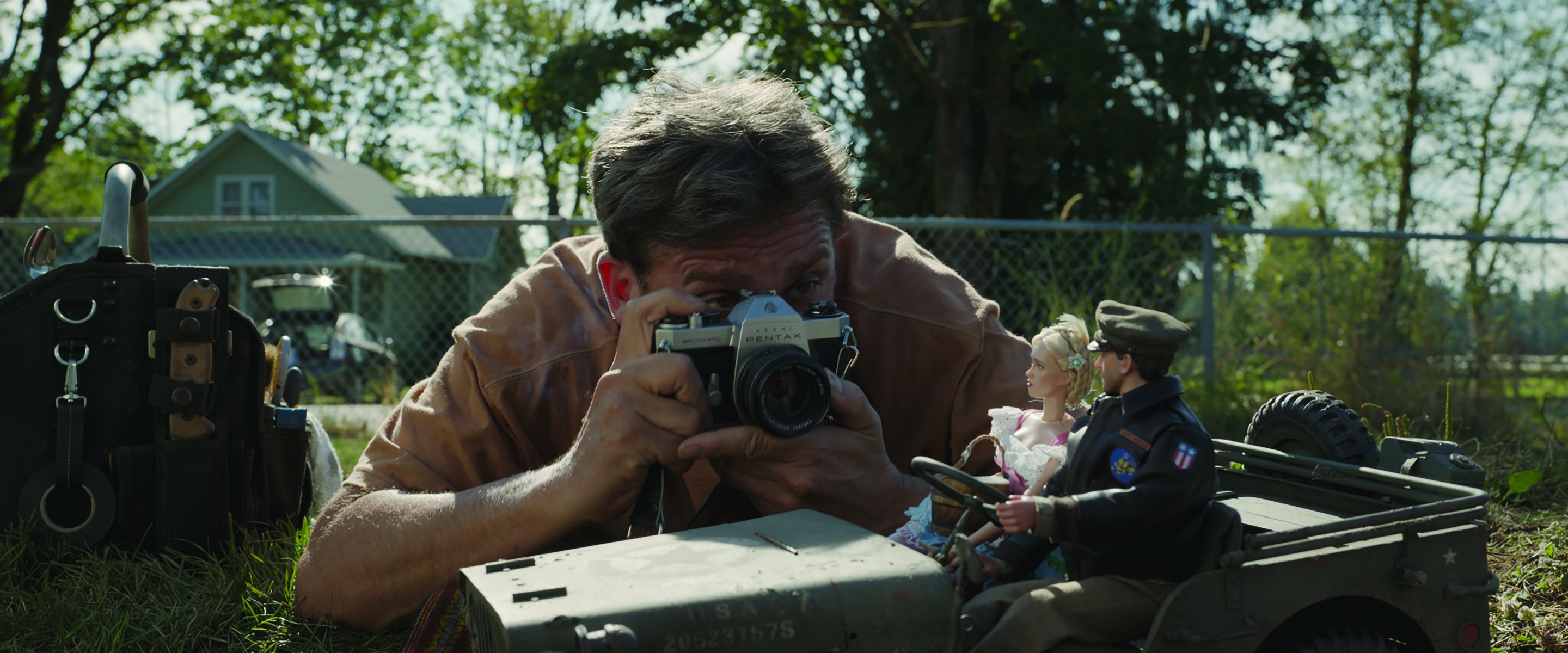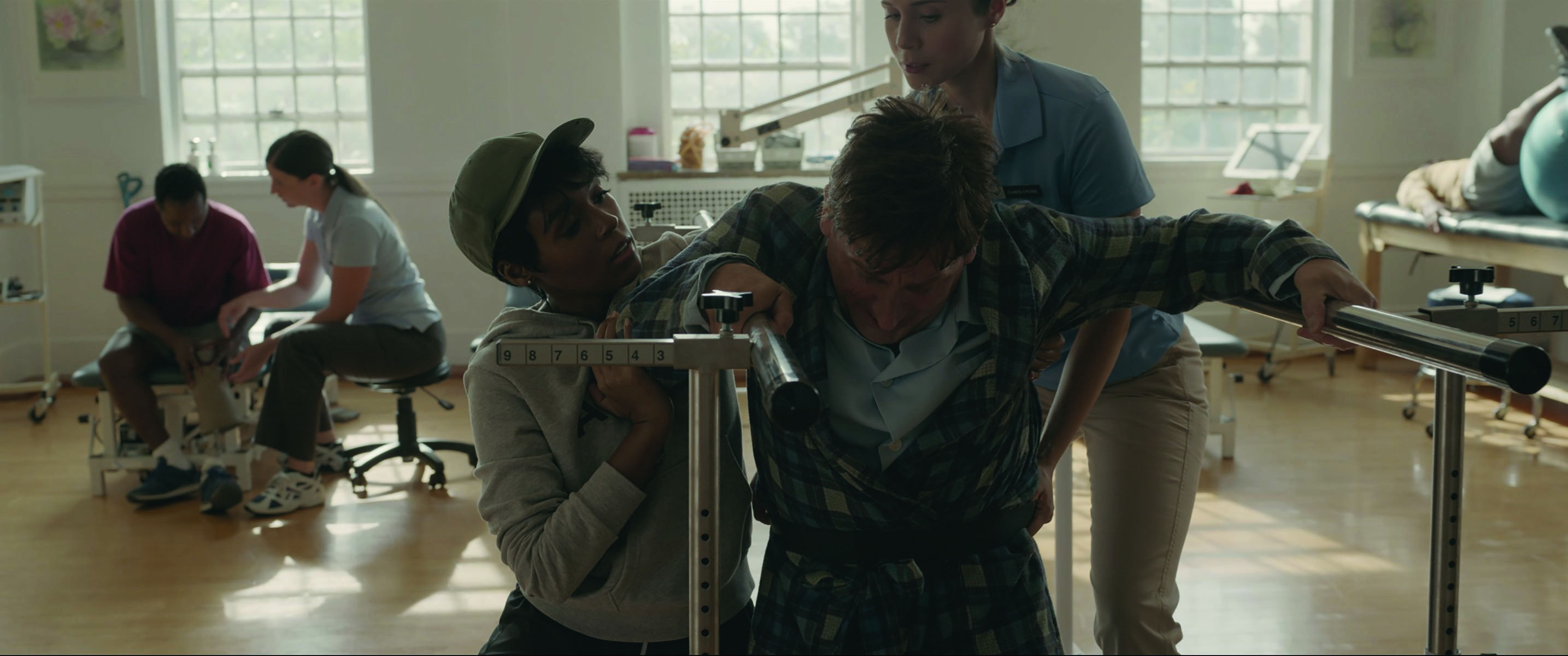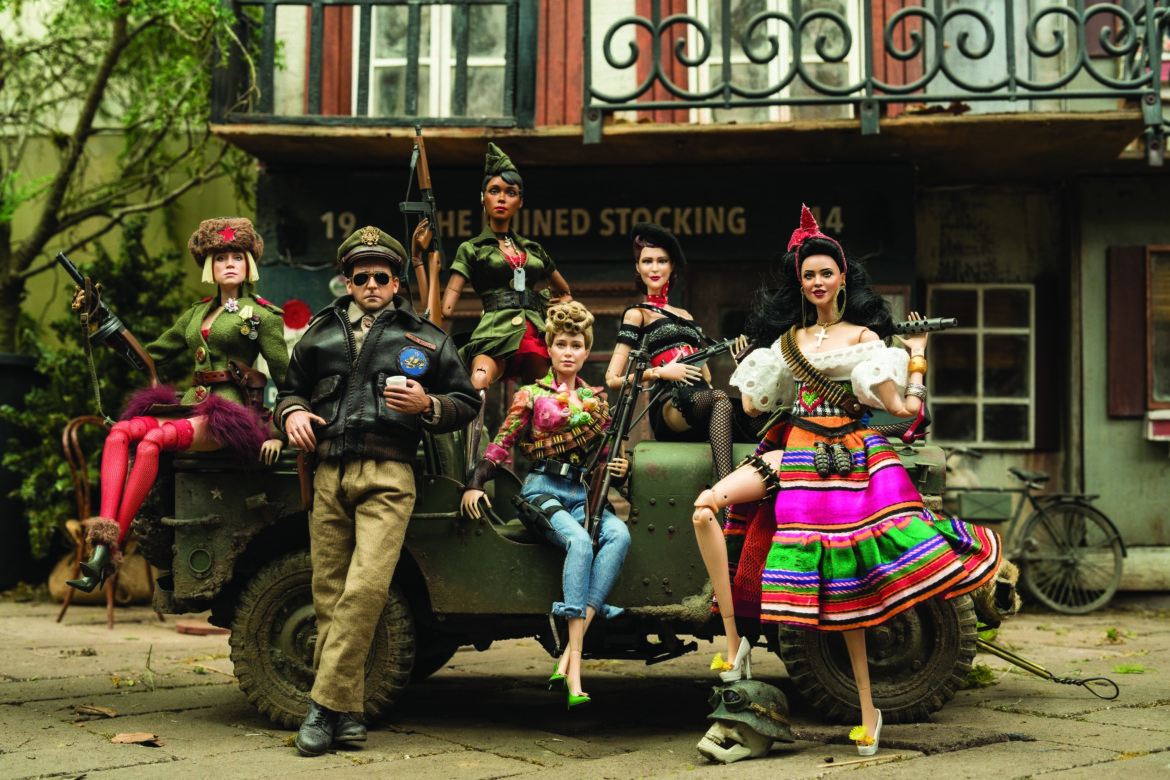Real-world drama meets imagination and CGI in this adaptation that falls short of the true story
By Nina Tabios
Based off of the 2010 documentary “Marwencol,” director Robert Zemeckis and screenwriter Caroline Thompson’s “Welcome to Marwen” turns the real Mark Hogancamp’s life and art into a battle-ridden fantasy drama rife with Zemeckis’ penchant for technological tinkering and CGI-ing famous movie stars (see: “Polar Express”). Amid the plasticized hijinks and gunfights between Nazi action figures and weaponized Barbie dolls, Zemeckis attempts to place a thoughtful lens on art as a healer for trauma—however, the result is a fumbling of a truly inspirational story for special effects fodder.
Before we meet Steve Carell as Mark Hogancamp, audiences first see Carell as Captain Hoagie, the Nazi-fighting, machismo American soldier doppelganger occupying the Belgian-village of Marwen. Marwen, when in CGI, is Mark’s alternate universe where Hoagie (CGI-Carell) is a hero and a ladies’ man rolled into one, exuding strength, charm, and wit. He’s supported by the women of Marwen, refurbished dolls likened after his friends (played by Leslie Mann, Gwendoline Christie, Eiza González, Merritt Weaver, and Janelle Monáe) to fight enemy soldiers in thrilling faceoffs and adventures that can come off strikingly violent and somewhat sexually-charged.

Mark Hogancamp (Steve Carell) photographs the dolls for his fictional town in “Welcome to Marwen,” directed by Robert Zemeckis. Photo Credit: Universal Pictures and DreamWorks Pictures © 2018 Universal Pictures and Storyteller Distribution Co., LLC. All Rights Reserved.
In the real world, Marwen is a 1:6 scale, World War II-era town Mark built in his backyard. He created Marwen as part of his recovery from a brutal attack where he was left for dead after five assailants took offense to Mark’s mention of occasionally wearing women’s shoes. Severe brain damage left him without any memory of his previous life but his artistic inclinations remained; within Marwen, Mark staged and recreated dramatic, realistic melodramas which he captured in photographs that garnered some attention.
The movie revolves around how Mark’s imaginations play out in Marwen, but his dependency on its world hinders his actuality. The true drama is whether or not he will show face in the court hearing that would give long-term prison sentences to his attackers or show up to his art exhibition in New York City. It begs the question: creating art to cope is fine, but can Hogancamp learn how to face reality and not remain trapped within the sectors of his own fantasies?

Julie (Janelle Monáe), a disabled military veteran, helps Mark Hogancamp (Steve Carell) through his recovery after a brutal attack in “Welcome to Marwen,” directed by Robert Zemeckis. Photo Credit: Universal Pictures and DreamWorks Pictures © 2018 Universal Pictures and Storyteller Distribution Co., LLC. All Rights Reserved.
Despite the fascinating animation, “Welcome to Marwen” is Zemeckis’ poor attempt to dramatize the tremendous story of a trauma-survivor-turned-artist. It’s his latest entry into a catalog of failed technical experiments alongside 2007’s “Beowulf” and 2009’s “A Christmas Carol.” On top of that, the reductive female characters are not only a sheer waste of talent from Carell’s supporting super-women cast but also disappointing knowing how influential and crucial women were in the real Mark Hogancamp’s journey to recovery (“The only species on Earth that haven’t attacked me are women,” Hogancamp said in a 2015 Guardian story).
There are a few feel-good sentiments available in “Welcome to Marwen”—the power of imagination, the remedial benefits of practicing art and creativity, acceptance and freedom of gender expression. But as a final film product, Zemeckis misses the mark yet again. A smattering of special effects and CGI can’t mask the questionable plot choices (somehow, Zemeckis managed to sneak a “Back to the Future” Delorean into Marwen) or downplay victimization and the psychological distress that comes with it. Zemeckis’ version of Marwen may be wondrous to behold at first, but for the price of narrative, character, and talent, it just isn’t worth the cost.
“Welcome to Marwen” is now playing in theaters.
